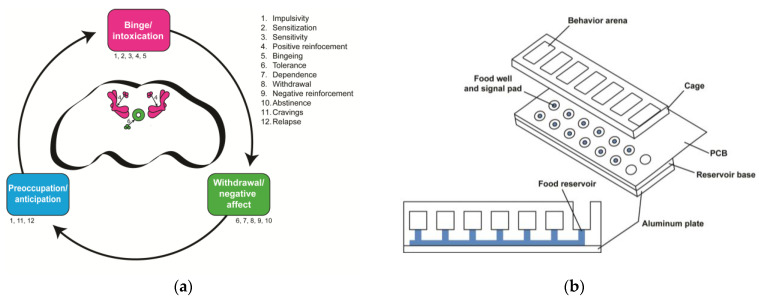Figure 2.
Drosophila offer opportunities for insights into the neurobiological stage-based model of addiction. (a) How the proposed three-stage model of addiction maps onto the fly brain. Each stage is labeled with numbers that correspond to the endophenotypes listed on the right. These endophenotypes are not necessarily stage-specific and some occur in multiple stages. The fly brain schematic shows the mushroom body and the PAM neuronal DA cluster (pink), which are involved in the binge/intoxication stage, and the ellipsoid body and PPM neuronal DA cluster (green), which are involved in the withdrawal/negative affect stage. No brain regions are known to be involved in the preoccupation/anticipation stage. (b) The Fly Liquid–Food Interaction Counter (FLIC) assay can be used to study endophenotypes in the binge/intoxication stage (e.g., positive reinforcement and bingeing) in flies. The assay is assembled with an aluminum plate at the base, the reservoir base, and the printed circuit board (PCB). The reservoir base is where the solutions are stored, and the PCB contains the electrical circuitry needed to measure the time flies spend interacting with the solution. Flies are transferred to the behavior arenas where they have the choice between solutions in two food reservoir wells. The food wells are surrounded by a signal pad where flies close an electrical circuit upon interacting with the solution. Software measures the amount of interaction time that flies have with the solution. This schematic is adapted from Ro et al., 2014 [51].

